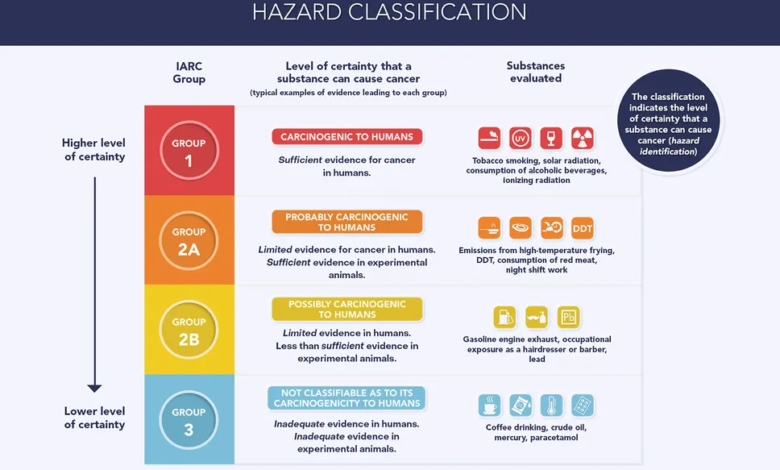Aspartame can cause cancer, says WHO: What you need to know

Aspartame — a popular artificial sweetener found in diet sodas, cereals, yogurt, medicines and more — was officially deemed a “possible” cause of cancer by a group affiliated with the World Health Organization on Thursday night.
But just because something is a “hazard” doesn’t mean it’s a “risk,” experts tell the Star. Example: Although aspartame can cause cancer, you’d have to drink a dozen or more diet sodas in one sitting to feel its effects.
“We are not advising consumers to stop consuming (aspartame) altogether,” said Francesco Branca, WHO’s director of nutrition. “We just recommend a little moderation.”
Late Thursday, the International Agency for Research on Cancer (IARC) declared aspartame a “possibly carcinogenic to humans” after review by independent international experts, and based on “limited” evidence linking the sweetener to liver cancer.
At the same time, the Joint FAO/WHO Expert Committee on Food Additives (JECFA) assessed how much aspartame one can safely consume, and maintained its previous position – that one can safely eat up to 40 mg of the sweetener per kilogram of body weight. per day.
The Canadian Cancer Society and Health Canada are now reviewing the WHO groups’ findings.
What is Aspartame?
Aspartame is a zero-calorie artificial sweetener that is about 200 times sweeter than sugar, and the world’s most widely used sugar alternative. The compound is most commonly associated with diet soda, but is also present in a wide variety of products.
These include: table-top sweeteners such as NutraSweet and Sugar Twin, gum and candy, gelatin, cereal, ice cream, sugar-free cocoa mix, medications (such as cough drops or gummy vitamins), toothpaste, and other foods intended to aid weight loss.
David Ma, a professor who researches nutrition and cancer at the University of Guelph, previously told the Star that products containing artificial sweeteners may not list exactly how much of the compound they contain, so shoppers should be wary. But if you cook for yourself and avoid highly processed foods, he says there’s “little to worry about.”
Consuming aspartame “occasionally is fine, based on current data, but at too high a level we could get into trouble,” Ma said. “My wife hates this post, but everything in moderation. And I think that applies in this case.”
Is aspartame bad for you?
Aspartame may be linked to cancer, but that doesn’t mean it’s necessarily dangerous — it depends on how much you consume.
For a 60 kg (or about 130 lb) person, “the threshold for adverse health effects (from aspartame) is something in the range of 12 to 36 cans of diet soda,” Ma said. “That’s a lot — so it’s generally low risk based on current science.”
In 1981, the JECFA ranked the acceptable daily intake of aspartame as 40 milligrams per kilogram of body weight per day, and their recent review maintains this. With canned diet soda averages about 200 milligrams of the sweetenerthat’s about 12 drinks a day for a 60 kg person.
“If you drink the occasional can of diet soda, I wouldn’t worry too much,” Mom said. “Although I would be very concerned if you drink more than 10 or more glasses a day, consuming some kind of artificial sweetener.”
While the downsides of aspartame are debatable, so are the benefits, said Reinhold Vieth, emeritus professor of nutritional sciences and laboratory medicine at the University of Toronto.
“There is absolutely no evidence that a person is healthier by consuming products that contain artificial sweeteners in general,” Vieth said in an email to the Star. “…My family and I have long avoided artificial sweeteners for reasons beyond any awareness of cancer risk.”
What is a “possible carcinogen?”
There are four categories of carcinogens determined by the IARC, ranked in terms of how confident we are that the substance can cause cancer – not how dangerous it is. From most to least certain these are: “carcinogenic to humans”, “probably carcinogenic”, “possibly carcinogenic” and finally “not classifiable as to its carcinogenicity in humans”.
“Possible carcinogens” such as aspartame are when a substance has limited evidence of cancer risk in humans, “sufficient” evidence in animals and “strong” evidence that the substance shares important characteristics with known carcinogens, according to the IARC.
The The “possibly carcinogenic substances” category includes more than 300 substances, from exhaust fumes from lead and gasoline engines to relatively harmless aloe vera. It also includes types of chlorinated paraffins, a since-banned chemical that was recently discovered in commercial products and toys sold across Canada.
Aspartame has been studied extensively since its inception in 1965. The IARC’s findings come after months of screening of more than 7,000 studies, of which about 1,300 were included in the final review.
Clouded research on aspartame
Despite the many studies on the topic, it’s hard to parse how aspartame might affect us in everyday life, Ma said. For example, the amounts of aspartame tested in the lab can be vastly different from the amounts we consume on a daily basis.
“In these studies, very large amounts are tested and may not equate to usual consumption,” Ma continued. “Going back to our diet soda analogy, on average someone might consume just one (soft drink) every other day — but in the study they could test (exposure to the equivalent of) 10 to 20 cans per day.”
This becomes especially murky when it comes to cancer, which often takes years or even decades to develop after exposure.
“There is still a need for long-term studies to determine whether something causes cancer. It will take many years to figure it out,’ Ma said. “So where a lot of the data comes from is using experimental models and animal models or cell culture, and then trying to extrapolate (to humans).”
With files from the Associated Press

:format(webp)/https://www.thestar.com/content/dam/thestar/uploads/2023/07/14/who-carcinogen-0.png)




